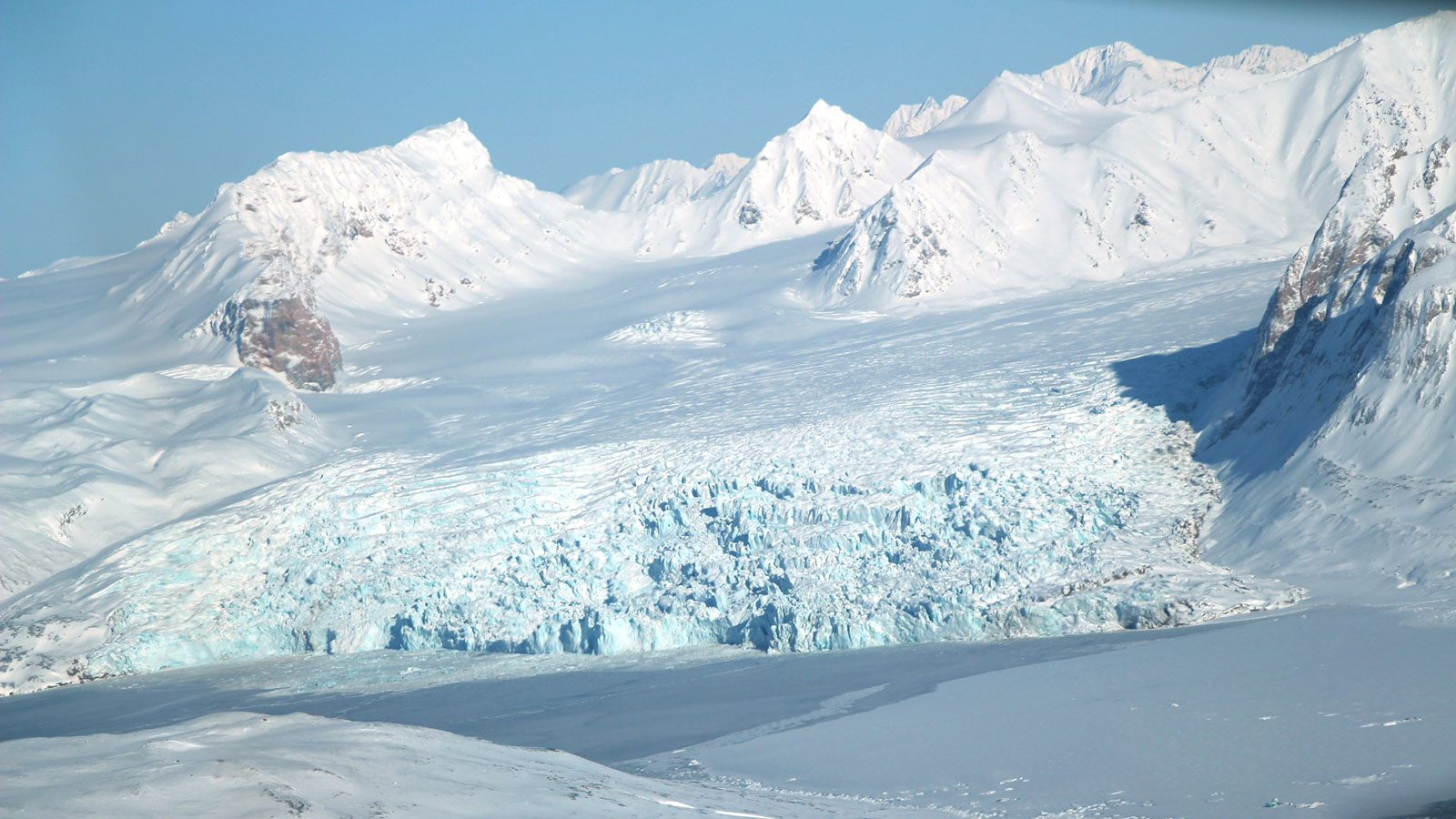A small glacier in the Arctic region of Norwegian archipelago Svalbard, as photographed by NASA’s Airborne Tropical Tropopause Experiment (ATTREX). This is one of the seven regions where ice loss is accelerating, causing the depletion of freshwater resources.
Seven of the regions that dominate global ice mass losses are melting at an accelerated rate, a new study shows, and the quickened melt rate is depleting freshwater resources that millions of people depend on.
The impact of melting ice in Greenland and Antarctica on the world’s oceans is well documented. But the largest contributors to sea level rise in the 20th century were melting ice caps and glaciers located in seven other regions: Alaska, the Canadian Arctic Archipelago, the Southern Andes, High Mountain Asia, the Russian Arctic, Iceland and the Norwegian archipelago Svalbard. The five Arctic regions accounted for the greatest share of ice loss.
Image Credit: NASA/John Sonntag
NASA的空中热带对流层顶实验(ATTREX)拍摄的挪威群岛斯瓦尔巴特群岛北极地区的小冰川。这是冰川流失加剧,造成淡水资源枯竭的七个地区之一。
一项新的研究显示,在全球冰量损失最严重的地区中,有七个正在加速融化,而融化速度的加快正在耗尽数百万人赖以生存的淡水资源。
格陵兰岛和南极洲融化的冰对世界海洋的影响已得到充分证明。但是,导致20世纪海平面上升的最大因素是位于其他七个地区的冰盖和冰川融化:阿拉斯加、加拿大北极群岛、安第斯山脉南部、亚洲高山地区、俄罗斯北极地区、冰岛和挪威群岛斯瓦尔巴特群岛。北极的五个地区是冰量损失最多的地区。
影像来源:NASA/John Sonntag







